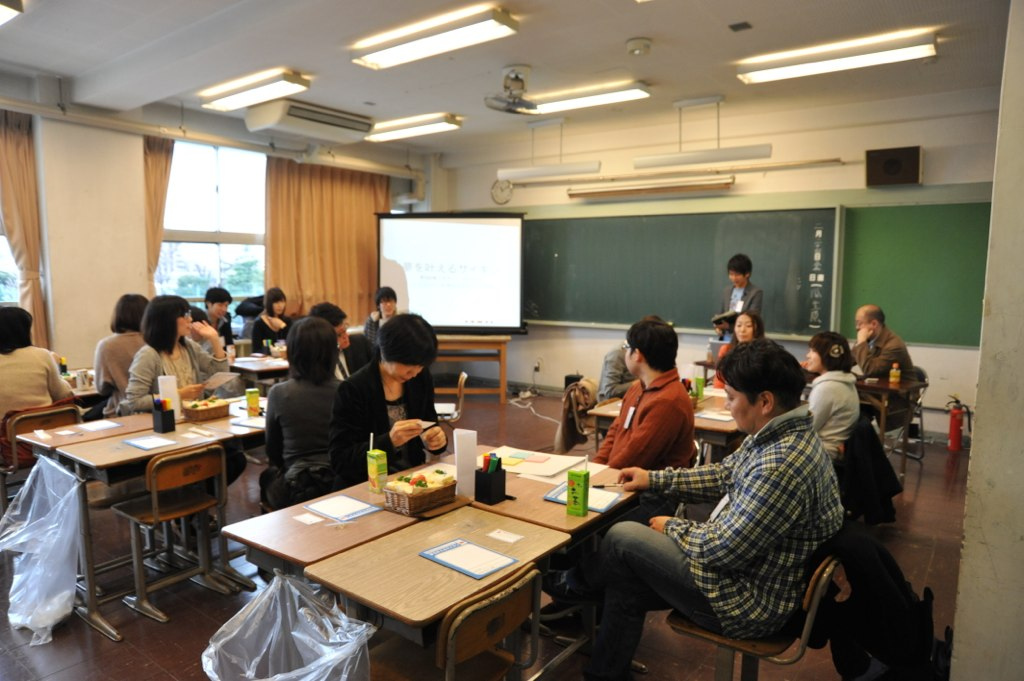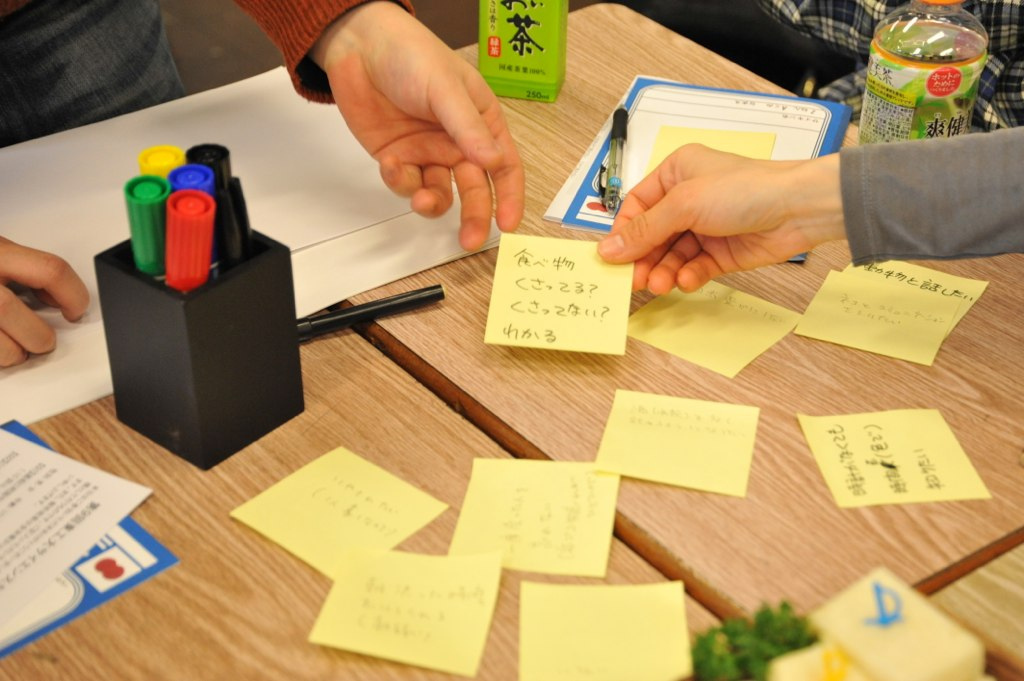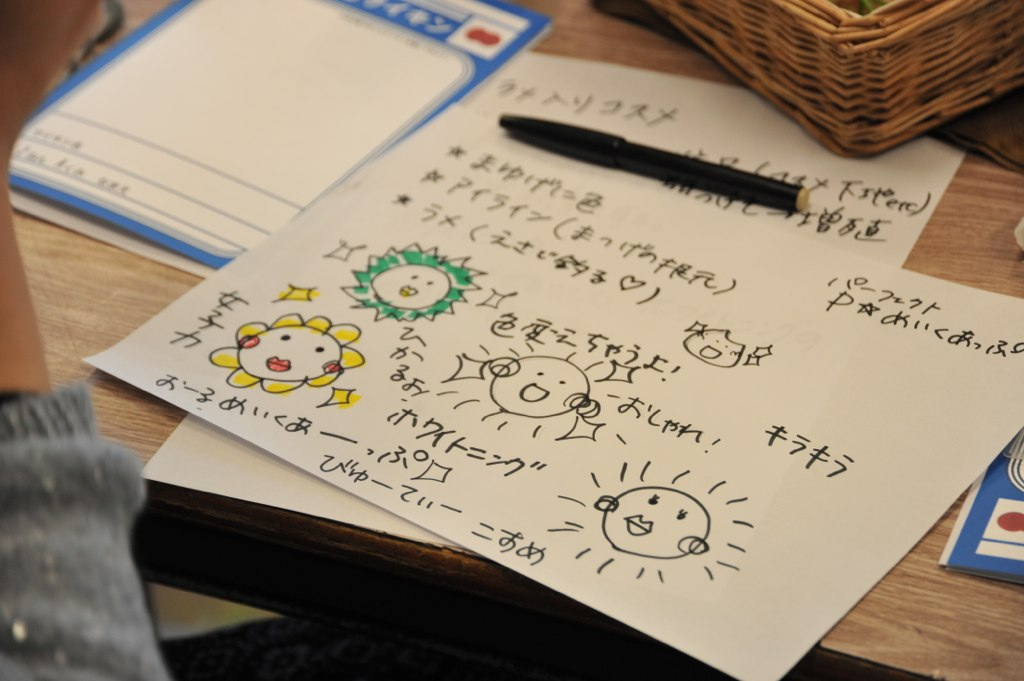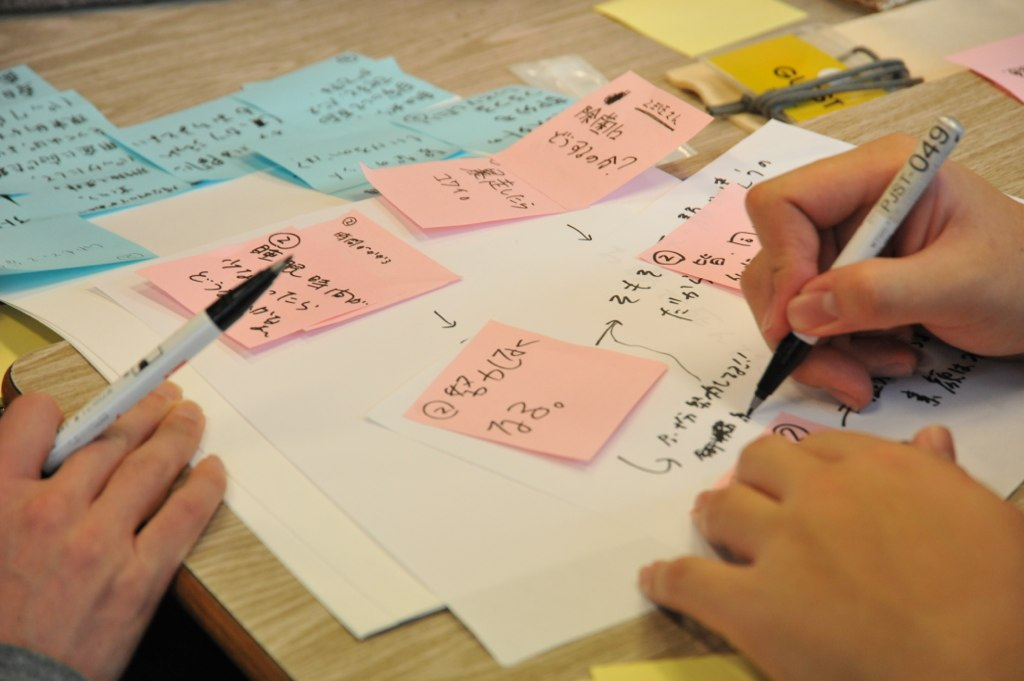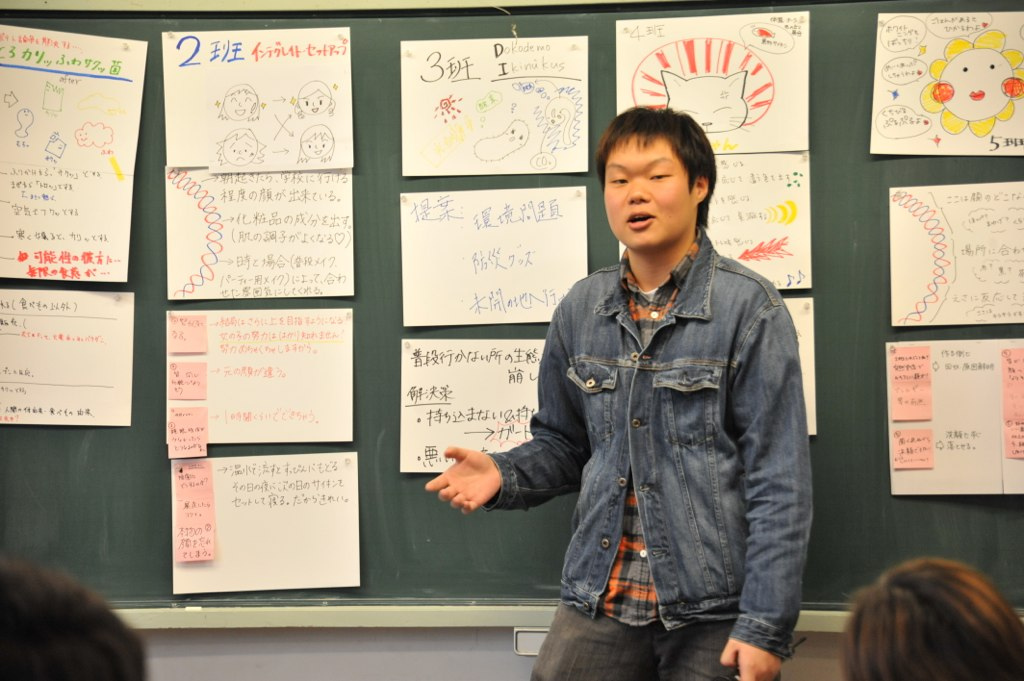Team:Tokyo Tech/HumanPractice.htm
From 2012.igem.org
(→Ⅱ The flow of the day) |
|||
| Line 12: | Line 12: | ||
What’s your dream? Sleep tight and sound every night? Don’t want to shiver in cold? Well. Maybe the age of producing the bacteria that will make your dream come true has already come. | What’s your dream? Sleep tight and sound every night? Don’t want to shiver in cold? Well. Maybe the age of producing the bacteria that will make your dream come true has already come. | ||
The key to that is synthetic biology, including iGEM. As you know, synthetic biology is the “ultimate genetic engineering” which means to incorporate a brand new system into an organism that exists already. | The key to that is synthetic biology, including iGEM. As you know, synthetic biology is the “ultimate genetic engineering” which means to incorporate a brand new system into an organism that exists already. | ||
| - | [[File:tokyotech human1.png|200px|left]] | + | [[File:tokyotech human1.png|200px|thumb|left|Capsaicin pocapocas]] |
| - | [[File:tokyotech human2.png|200px| | + | [[File:tokyotech human2.png|200px|thumb|left|Bacteria producing aroma]] |
| - | <br><br><br><br><br><br><br><br><br><br> | + | <br><br><br><br><br><br><br><br><br><br><br> |
Taku Nakayama, and Mai Miura (members of Tokyo_Tech iGEM team) have participated in the science cafe as assistants for the event and supported people who don’t specialize in biology to discuss synthetic biology with researchers. Nakayama and Miura wrote this report from the perspective of the assistants. The science cafe event is a project of Tokyo Institute of Technology postgraduate School’s lecture, namely “Management and Organization of Science Cafe.” Science cafe has been held since 2005 as part of the lecture and organized by students who take the lecture. The material in the event was all written by graduate students (except the presentation speech and PowerPoint). Pictures and photographs were kindly provided from these students. | Taku Nakayama, and Mai Miura (members of Tokyo_Tech iGEM team) have participated in the science cafe as assistants for the event and supported people who don’t specialize in biology to discuss synthetic biology with researchers. Nakayama and Miura wrote this report from the perspective of the assistants. The science cafe event is a project of Tokyo Institute of Technology postgraduate School’s lecture, namely “Management and Organization of Science Cafe.” Science cafe has been held since 2005 as part of the lecture and organized by students who take the lecture. The material in the event was all written by graduate students (except the presentation speech and PowerPoint). Pictures and photographs were kindly provided from these students. | ||
| Line 45: | Line 45: | ||
While listening to other teams’ presentations, participants were asked to write down the comments for the bacteria in two points; | While listening to other teams’ presentations, participants were asked to write down the comments for the bacteria in two points; | ||
| - | [[File:tokyotech human5.png| | + | [[File:tokyotech human5.png|400px|center]] |
a) How would it be useful for our daily life? | a) How would it be useful for our daily life? | ||
| Line 53: | Line 53: | ||
After the presentations, the comments were handed out to each team and the 2nd discussion begun; if the designed bacteria could be created, what kind of problems would we have in our daily life? Then participants were asked to think of their own solutions. | After the presentations, the comments were handed out to each team and the 2nd discussion begun; if the designed bacteria could be created, what kind of problems would we have in our daily life? Then participants were asked to think of their own solutions. | ||
| - | [[File:tokyotech human6.png| | + | [[File:tokyotech human6.png|400px|center]] |
Each team then made a second presentation by introducing the possible problems and their way to solve the problems. The participants had deepened their knowledge of synthetic biology, ethical issues and environment issues. | Each team then made a second presentation by introducing the possible problems and their way to solve the problems. The participants had deepened their knowledge of synthetic biology, ethical issues and environment issues. | ||
| - | [[File:tokyotech human7.png| | + | [[File:tokyotech human7.png|400px|center]] |
=Ⅲ Ideas of participants= | =Ⅲ Ideas of participants= | ||
Revision as of 17:34, 26 September 2012
Ⅰ Abstract
What’s your dream? Sleep tight and sound every night? Don’t want to shiver in cold? Well. Maybe the age of producing the bacteria that will make your dream come true has already come. The key to that is synthetic biology, including iGEM. As you know, synthetic biology is the “ultimate genetic engineering” which means to incorporate a brand new system into an organism that exists already.
Taku Nakayama, and Mai Miura (members of Tokyo_Tech iGEM team) have participated in the science cafe as assistants for the event and supported people who don’t specialize in biology to discuss synthetic biology with researchers. Nakayama and Miura wrote this report from the perspective of the assistants. The science cafe event is a project of Tokyo Institute of Technology postgraduate School’s lecture, namely “Management and Organization of Science Cafe.” Science cafe has been held since 2005 as part of the lecture and organized by students who take the lecture. The material in the event was all written by graduate students (except the presentation speech and PowerPoint). Pictures and photographs were kindly provided from these students. The theme of the science café of this year was the relationship between synthetic biology and human society. During the event, the participants were divided into teams of five or six persons and they had some discussions on the following subjects.
1) Design the bacteria that realize any wishes you have.
2) Discuss about problems, when the bacteria you’ve designed can really be created.
3) Propose solutions to prevent troubles, when you face them.
The purpose of the science cafe is to provide a chance both for researchers and general citizens to reconsider the relationship between synthetic biology and human society through the discussion of the convenience that synthetic biology brings us as well as the problems.
Ⅱ The flow of the day
Design the bacteria
In the beginning, staff of the science café introduced the essence of synthetic biology to the participants. They had a guest speaker who has specialized in synthetic biology, so the guest gave a short talk about the essence of synthetic biology. Most of participants had little knowledge about molecular biology, so during this phase, we tried to explain in a simple way to help participants to understand easily.
After the introduction of the scientific information, the construction of the ideal bacteria has begun! The participants were divided into teams of five or six person. Staff of the science café attended each team to facilitate the discussion. Then, participants had the 1st discussion; if you were able to design the bacteria that realize any wishes you have, what would you design? Each team was asked to design one ideal bacterium per team, so the discussion had started from sharing the “wishes” between the team members. First, participants were asked to pick up their “wishes” and write it down on a card as many as they can. Second, participants shared the cards they wrote and put the similar “wishes” in order to categories in several groups, so that it would be easier to design the ideal bacteria in the team.
Third, participants tried to think about some details of the bacteria as to follow how iGEMers do to construct the plasmid with BioBricks! Members of the team draw the image of the bacteria to show what bacteria can do, and wrote down the list of the imaginably genes in the plasmid. At last, each team had a short presentation of their ideal bacteria.
Discuss about problems
While listening to other teams’ presentations, participants were asked to write down the comments for the bacteria in two points;
a) How would it be useful for our daily life? b) What kind of problems would occur if the bacteria were really produced?
Propose solutions to prevent troubles
After the presentations, the comments were handed out to each team and the 2nd discussion begun; if the designed bacteria could be created, what kind of problems would we have in our daily life? Then participants were asked to think of their own solutions.
Each team then made a second presentation by introducing the possible problems and their way to solve the problems. The participants had deepened their knowledge of synthetic biology, ethical issues and environment issues.
Ⅲ Ideas of participants
Text
Title
Text
Title
Text
Ⅳ Changings of participants's mind after attending Science Cafe
Text
Ⅴ Things that have been innovated
Text
 "
"



